by Mike Brunel | Jul 20, 2017 | Sales
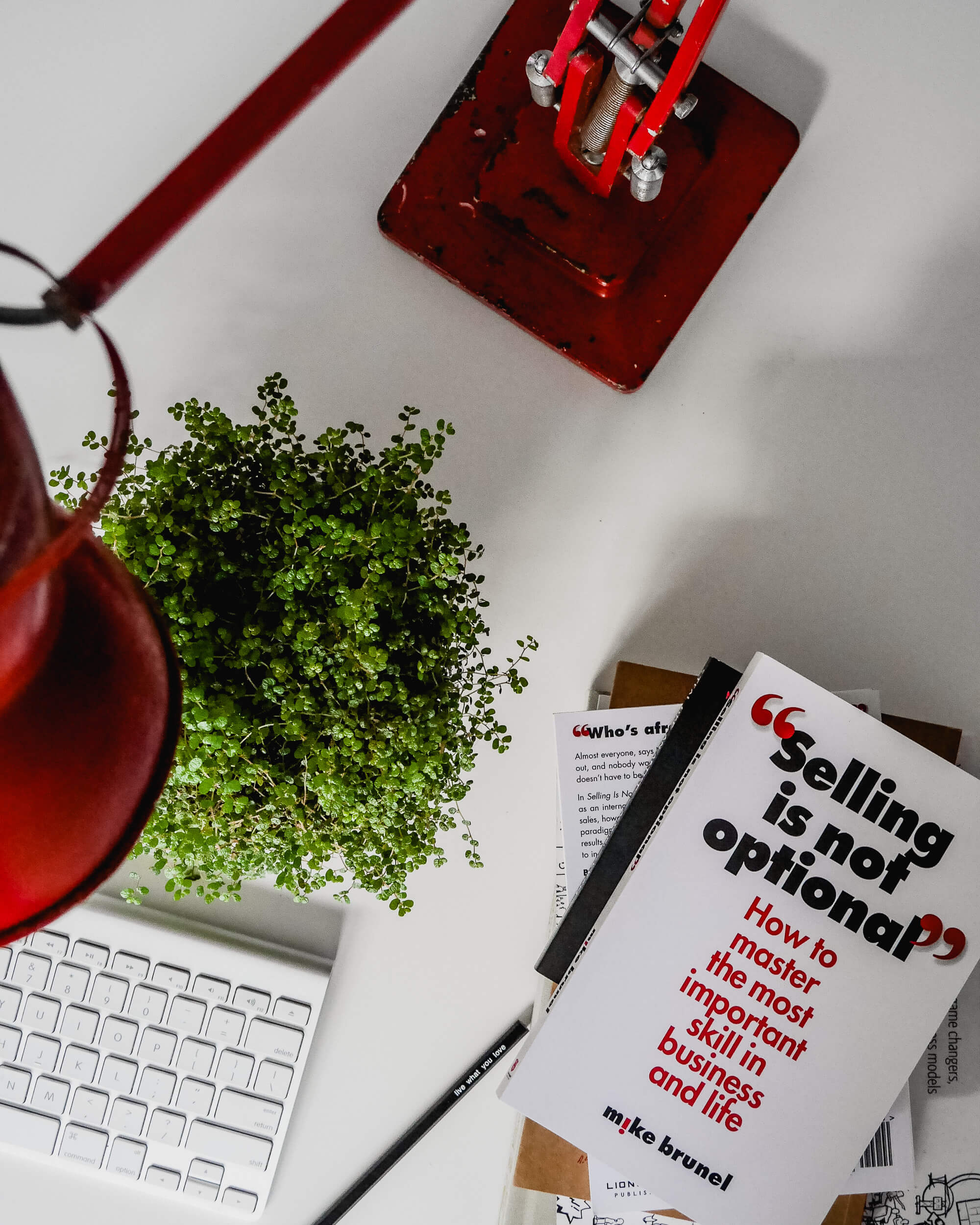
The Best Salesman I Ever Met … Wasn’t a Salesman. Do you think you know what a successful salesperson looks like? Are you picturing an expensive suit, a flashy smile, and a smooth, practiced pitch? That’s what we imagine when we think of sales, but the truth is that some of the best salespeople aren’t like this at all. In fact, the best salesman I ever met wasn’t intending to be a salesman at all; he was a mountain climber!
Before I tell you about this reluctant, yet remarkable, salesman, let’s look at another ordinary guy who turned out to have great success in sales. His name? Mike Brunel.
Humble Beginnings
My first job did not look at all like a sales job, but it was. I was a roustabout, or shearing hand, in a shearing gang. It was good job for a New Zealand teenager. I learned loads from the shearers—huge, uncompromising men with incredible mental stamina and fortitude.
A professional shearer can shear a sheep in under two minutes, removing the fleece in one piece. My job was to quickly pick up the fleece, throw it over a table like a blanket, and inspect it for maggots. When I heard the shearer yell “maggots!” it was my responsibility to remove the critters. I am still trying to forget the squirmy sensation of maggots running up my arm. I don’t recommend it.
The shearing job was all about speed, as shearers back then were paid $35 per hundred sheep shorn. Speed was crucial: shearing a flock took two minutes per sheep, completed in one-hour stints, eight hours a day, four to five days a week. They made hundreds of dollars a day, yet any interruption cost money and time.
Therefore, the shearer needed me to be an integral part of his team. I needed to be listening, working with the others, understanding their motivations and quirks, knowing when to back off, and recognizing when to invite conversation. Right there, on the sheep farm, I used the same skills as any successful salesperson.
We are all in the business of sales.
From my experience as a teenager, I learned that people interact with people they like. People buy people. Learning these skills is not difficult. The basics: know your goals, listen well, understand your audience, and expand the relationship with that audience.
The word “sales” is often thought of as a dirty word. Successful business owners rush to assure me that they are “not in sales.” They are, though. Salespeople should not be ashamed of their role. Sales skills are something everyone can, and must, learn to be effective in any industry.
Since my roustabout days, I have accumulated a lifetime of learning about sales. For over thirty years, I have made money selling services including sales training, marketing, and sales promotion. I built a business from nothing into a multimillion-dollar international consultancy with sales in excess of $300 million, serving over 400 clients annually.
The bottom line: I know sales. I can help you generate more sales for your organization by teaching you how to approach your client the right way, and how to ask for—and get—their commitment.
Small Changes, Big Results
Out-of-the-box thinking about sales served me well when I started out selling media. Media is an unusual thing to sell. Not only is airtime an intangible product, it is also a time-limited commodity. If you don’t sell that 6:00 am commercial slot on your New York station, it is gone forever. Selling seats on airplanes is the closest analogy. If that seat beside you is not sold once an airplane takes flight, it will never be sold. The same principle applies to media, especially radio and television. “Here today, gone tomorrow” was a real problem for radio stations. We used to ask radio advertising executives, “What unsold airtime have you got and what can we do to package that up and sell it?”
Media companies sell out, on average, only about 70% of their airtime. We solved that problem by building a seminar-selling program that presold 30% of radio airtime. We would say to the media people, “We’ll show your sales team how to presell 30% of your inventory. We will help you build a database and then invite all the advertisers from the database to a seminar where we present the benefits of buying the media. After that, we make them an offer: they can buy a twelve-month advertising contract at an exceptionally good price, but they have to make the decision on the spot because you only have 30% allocated.” The first media company that we used this technique with was one of our partners. We sold a million dollars in six weeks.
If I could learn how to build a global company from a little place called New Zealand, anyone can do it. Eventually we had offices in Atlanta, Toronto, Sydney, and the United Kingdom. New Zealand is a very small country, but we actually changed the way that media sales companies sold their inventory worldwide. No one else was doing it this way before us.
I harbor a deep passion for this business, and I struggle when I come up against businesspeople who reject the word sales. They freak out. They say, “Oh my, God, I’m not a salesperson.” I reply, “Yes you are. Let me show you how.”
To The Top of the World
You may suspect I just got lucky. Maybe only a certain type of person can expect this kind of good fortune.
Remember that mountain climber I mentioned earlier, though? His name was Rob Hall, and he was an athlete, not a businessperson. Yet, he made one of the most memorable—and successful—sales pitches I ever heard.
Picture the scene. It was a blistering hot summer’s day in 1990 and two men were pacing up and down in a small conference room, one dressed in a suit and the other one in full climbing gear.
We were nervous, frightened, and excited. Just a few feet away sat several key executives from one of the biggest multi-national companies—Unilever—waiting to make a decision: would they sponsor Rob Hall in his quest to conquer Mount Everest? These guys were holding Rob’s future in their hands. Rob was one of our country’s finest mountaineers; he wanted to be the first New Zealander since Edmund Hillary to reach the top of Mount Everest.
To make that happen, Rob needed money. He required at least $300,000 before he could take a single step. Even though asking for funding didn’t come naturally to this outdoorsman, there he sat, ready to make his pitch.
Rob’s unique idea was take an expedition—three climbers including the son of Edmund Hillary, his son Peter, and another great climber named Gary Hall—to the top of Mount Everest. They also wanted to take one hundred children with them to help clean up the base camp. The base camp looked like a litterbin; climbers dump trashcans and rubbish there when they stop to rest before heading to the peak.
Rob approached my media company with an intriguing idea. He wanted to broadcast live back to our network of radio stations on his way to the top of Mount Everest. He would report back via satellite phone, which at the time were quite innovative.
That is why we were sitting in that conference room and Rob was in his rain pants, with ropes around his shoulder and his ice ax in one hand. I had asked him to do something different to make his case and he rolled with it. We knew we only had one shot.
Rob’s presentation was infectious. As Rob walked into the boardroom—six foot five, sporting a giant beard—all the executives from Unilever opened their eyes a little wider. I spoke first, while they sat and wondered what this mountain man was going to say. I talked about the commercial support an event like this would offer an advertiser like Unilever. I remember shaking, I was so nervous, but I had to present the concept: we would invite Unilever’s Coldwater Surf washing powder brand to sponsor the climb to the mountaintop. One hundred schoolchildren would come along to rejuvenate the base of the mountain. The cleanup hook was a strong match for the brand. We wanted to call it the Coldwater Surf Everest Challenge.
I introduced the idea, and then Rob got up. He nailed it.
He told them why he wanted to take these men to the mountain, why he wanted to be the first New Zealander to climb Mount Everest since Edmund Hillary, and why he needed sponsorship money. He described how he would climb the mountain and how he would teach the children the importance of looking after the environment. As his presentation warmed up, the body language in the room shifted; the executives were enjoying the show. Finally, Rob picked up his ice axe and banged it on the table—not too loudly, though I think they got a bit of a start.
“See this ice axe?” he asked. “I’m going to take that to the top of Mount Everest and when I come back, you can have it. You can put it in the boardroom.”
A couple of things about this presentation resonated. First, Rob’s appearance was unique. Second, his enthusiasm and knowledge were crystal clear. He shared a wealth of information and enthusiastically expressed his passion for the plan. He was great at selling because even though he was a reluctant salesman, his commitment to the project shone through.
Rob got the deal. His commitment paid off handsomely, and didn’t end with the sponsorship. Afterward, he built a strong relationship with that company, which opened up other opportunities. He asked himself, “Why should this client choose to invest over a quarter million dollars in sponsorship money for a mountain climber?” and he answered the question convincingly.
There was no sleazy sales team. It was just Rob being real and it was a huge success.
What did Unilever really buy from Rob Hall and me? More than advertising, they bought an experience. The top of Mount Everest is a very, very unfriendly place, but it is human nature to go to those places. Rob wanted to take every radio listener into the wilderness with him. What Unilever bought was that unique intrigue. Ultimately, they bought it because they liked Rob and they wanted to add some value to the world.
Hitting the Trail
What can we learn about selling from Rob’s story? He wasn’t a salesperson at heart, but he could motivate a buyer on the basis of his knowledge. Even though Rob was reluctant to be in the sales arena, he totally committed to the process. Many people aren’t willing to make that kind of promise because they’re turned off or intimidated by selling. Mastering selling requires only what Rob Hall had—expert knowledge of his product and a strong belief in it.
Although Rob’s story has a sad ending—he died saving a client during another Mount Everest climb—he died doing what he loved. To this day, I remember his passion, his commitment, and his ability to make things happen.
If a mountain man like Rob can do it, you can do it. This book is all about mastering the selling journey and understanding the buying journey. Let’s get on the path to success.
If you like that story, there are heaps more in my book with real live examples and tips you can use in your business.
Or why don’t you download a FREE chapter of my book right now!
Just a the bottom of this page download the rest of the story about Rob and other adventures.
If you want to overcome your fear of selling then email your details and we can set up a FREE session to answer some of your questions around sales.
In the meantime, good selling.
Have a great week…
Mike
P.S.
Keep an eye out for my Changing your Sales Mindset- 7 Day Challenge.
Simply sign up at the bottom of the page and receive a FREE invite, plus a FREE chapter of my book.
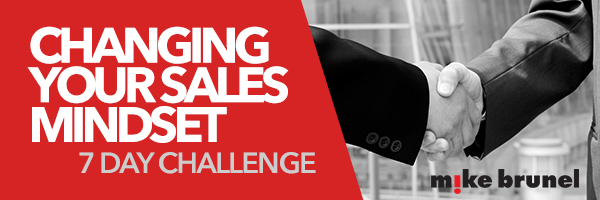
by Mike Brunel | Jul 13, 2017 | Negotiation, Sales
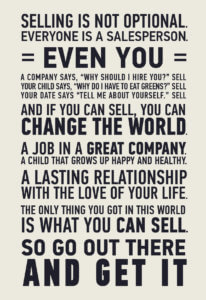
Negotiation is a form of Selling True or False?
We all know that Negotiation is a form of selling, and our ultimate goal is that everybody wins. Impossible, right? Maybe not. In my book Selling is Not Optional- How to Master the most important skill in business and life I devote a whole chapter to negotiation.
Mutual Success
In the chapter I stress the goal of mutual success for both the buyer and seller. Often, we think negotiations can only succeed one way: we present the product, say all the right things, and get the client really excited about buying. Then we ask for the business and they jump across the desk and hug us, saying, “You saved my life.” Right?
It simply doesn’t happen that way.
What’s your fear?
Often, salespeople don’t even ask for the business for fear of rejection. They are afraid to hear, “No, not at the moment,” or, “I want to negotiate.”
As we have seen from other chapters in the book , mindset makes a difference; you have to be open to the next step. Often, after someone does decide to purchase, they still want to parry a little. People feel it is a bit of a game.
We are all in the game of negotiation. I left the house this morning negotiating with my wife about a couple of things. We negotiate with our partners and our fellow workers, and I can tell you as a parent of teenagers, we negotiate with our children.
Salespeople should avoid cultivating a closed mindset around bargaining. Negotiations are just a form of communication. Consider how negotiations can get you closer to finding a mutually beneficial solution.
A Beautiful Mindset.
Think of the John Nash story, told in the movie A Beautiful Mind. Nash, an American mathematician, proved that when you cooperate, everybody wins, and wins bigger. Game theory demonstrates that cooperation can increase each player’s ultimate reward. Having a collaborative mindset is actually the key to successful negotiation.
Here are some takeaways from my book on the subject of negotiation. (link)
- Plan your negotiation approach. Have a checklist. Don’t forget your agreement.
- There are often only a few standard areas of concerns for your clients.
- Keep your sense of humour.
For additional tips on selling your product or service go to mikebrunel.com. Look forward to seeing you soon.
Good Selling
Mike Brunel

by Mike Brunel | Jul 12, 2017 | Sales
Harnessing the power of Testimonials
At least once a month at my place, on a Friday night, my family will have to make a major decision: ‘What takeaways are we going to have tonight’?
A third world problem right?
An old ritual from days gone by.
I am sure the Friday takeaway ritual came from my own family when all of us would pile down to the fish and chip shop, and get to choose between a sausage, hot dog and fish with a few chips thrown in, then wait in the car eating them, while Mum and Dad nipped off to the pub for a quick drink.
New experience
In our family now we might want to try something different and go out to a café or restaurant.
When that happens the question always comes up ‘what’s new in town’ or ‘, what was the name of that place that my mate Dave was talking about last week’?
Following this, we’ll call or text Dave to ask him what the restaurant was called because we know he’s pretty reliable when it comes to good food!
Why we need assurance – Power of Testimonials
What people say about you is 10 times more powerful and believable than what you say about yourself.
Deep down you know that Dave would not recommend that restaurant unless he enjoyed it. He is telling you from his own experience and that is very, very powerful.
You have your own interests at heart
It’s a lot harder to sell something to someone because naturally you have your own interests at heart.
What your clients may want is another way to make a decision. This is why an opinion from a third-party could be very influential, just like Dave influenced my decision on a restaurant.
The point is that getting someone to recommend you helps a lot. If it does not work out you can always blame Dave- no just kidding!
Create and use testimonials
There are a few tips I’ve come across in my time about receiving great testimonials, but one stands out as pretty crucial; be specific.
The more specific you are about the outcome you want, the more targeted your endorsement will be.
Let me give you an example. If you ask a client for a testimonial ask this way.
‘Hi John, can you describe the one or two most important benefits you’ve gotten the most from working with us… please explain specifically what you’ve gained from the experience:
The second one I often ask is: ‘Describe in Detail What Part of Your Experience with us made you the happiest?’
This question taps into the emotional side of the experience, and that is where you will understand what drove your clients to use you in the first place.
In summary, be specific, and don’t forget to ask for their thoughts around the emotional experience..
Have a great week, see you soon.
Mike.
Ps. Keep an eye out for our brand new CHANGING YOUR SALES MINDSET – 7 Day Challenge coming soon.
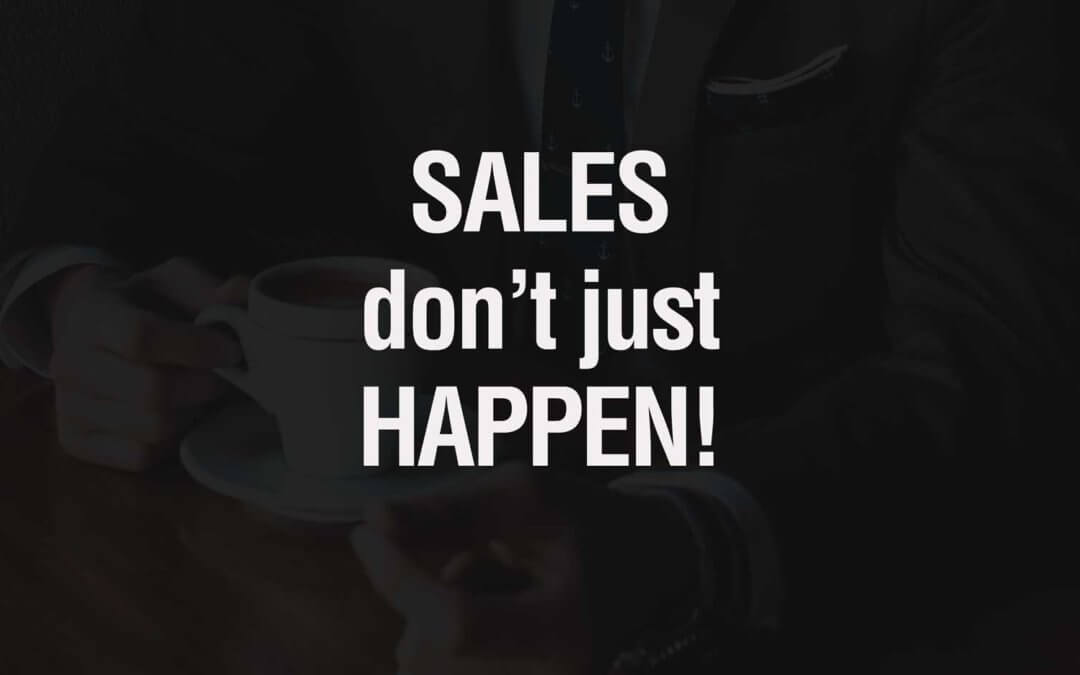
by Mike Brunel | Feb 2, 2017 | Sales, Strategy
80%……….Of all sales are made after the fifth call
48%……….Of all sales people call once and quit
25%……….Call twice and quit
10%……….Keep on calling
These statistics is pretty close to the mark in all forms of selling be it a service or product sell.
I think that we all know…
SALES DON’T JUST HAPPEN.
I have created a diagram to illustrate the real time that your buyer is actually available to sell to.
Just email me at mikebrunel.com for a copy.
Why do many some sales people thrive when others do not, here are some ongoing practices I observe every day.
1. Always add to your pipeline.
Not continuously adding to your pipeline is often a mistake that salespeople make once they have established a strong ongoing sales funnel. If you continue to add to your sales pipeline then if that long established client decides that this month they will not buy, then it does not matter because you have more potential opportunities in your pipeline.
If you are always taking the position of helping and assisting your client then your pipeline will increase. If you are only filling up your pipeline when you are desperate then many clients will sense that and you will come across as desperate.
2. Never assume they need you.
I have noticed that many salespeople leave a message with a client or a voicemail and they think it ends there. They think that they have done what they had to do and then move on. Depending on the relationship you have with that client they may or may not call you back. If you do want to do business with them then you have to plan that call and decide the ongoing strategy to get the person to respond. Create a proactive message for them to call you back.
3. Sales potty training.
For those that may have had young children there was a time when you had to train them to go to the toilet. In my experience (a while ago) I always used to say “Pee or get off the pot”. In other words, make a decision.
There will be times when you have to make a decision to get off the pot. Some clients need to be let go. You need to figure out if a prospect is serious about working with you or not. A good pipeline is full of qualified prospects and not “tyre kickers”
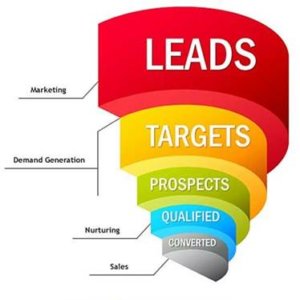
All pipeline activities have to support your key messages and understanding actually who your client is and where they play is vital to successful sales.
Good selling
Mike

by Mike Brunel | Jan 26, 2017 | Sales, Strategy
Part of the reason people panic when they think about sales is that selling seems like a mysterious process.
We might just be able solve that mystery.
It’s our belief that selling is like any other journey: the territory you are covering may be new to you, but it has been travelled before, and there are certain steps you can take to clear the way. Each step you take along the way matters.
Let’s look more closely at the selling journey.
Building Up by Planning
Selling a product or service is, in many ways, like a building project.
I have been involved in two major renovations for both a home and a commercial building.
Here’s how the process unfolds:
- You speak with an architect who presents you with some plans, drawings, or visual examples of what your home or building might look like.
- Once you approve your plan, you seek a builder to do the construction.
- If you want to approach the build with confidence, you’ll also want to be involved in the builder’s plans and timelines. Using excellent project management tools is key.
- Still, even the best-laid plans sometimes change. You might go back and forth and change a few parts of the
- Even when you get started, you need to keep in mind the need to be flexible, adjust to shifting timelines, accommodate last-minute decisions, and possibly suffer some setbacks.
- You need to be nimble, but it’s hard, because there is a lot at stake, financially and emotionally.
- Soon enough, though you start to visualise the final product and then watch your home or building take shape. Finally, you see your completed project in front of your eyes. All of that planning has paid off.
Following a plan and actually building that home requires discipline and principles.
It’s the same with sales, which unfolds in similar stages.
With both types of projects, it is important to begin with the right mindset, so why don’t we do that when it comes to constructing a sale? Why don’t we plan the process that will let us get a result we want?
Most business owners jump in too quickly, assuming that their product is so magnificent that people should just buy it. Or, they don’t bother to plan.

Usually salespeople do not follow any particular steps or process on the way to the sale of that product. If you look at sales the way you look at building your home, though, you will see that there are certain processes you have to follow to get a good result.
It does not have to be a complicated process, but you do need a plan.
Knowing a few simple steps in the journey to your sales is all that is required. In my book Selling is not optional we have a 7 step process to help you understand the selling journey better.
If you don’t know where you are going, how will you know when you get there?
Good selling
Mike
Here is an audio introduction on the preparing for the journey when it comes to selling.

by Mike Brunel | Jan 20, 2017 | Sales, Strategy
Things you could learn from Donald trump that you could use to make more sales.
Every day I ask one simple question of my clients? What motivates your client to buy off you and not the other guy?
In a recent editorial from the US editor of the Week Magazine* he made some underlining observations about the motivations that drove Donald Trump to run for the presidency. Take some time to read his thoughts.
You certainly do not have to share his motivation but it’s often at the core of every decision that your clients make about your product or service which I will talk to later.
#Article Reprint THE WEEK, July 2016
Editor’s Letter
Throughout life, Donald Trump has been disrespected. The son of a real estate developer who build cheap rental housing in Brooklyn and Queens, Trump was sneered at when he crossed the east river to make his name in Manhattan by building glitzy hotels and condominiums. Even after he had success, sophisticates dismissed him as a “short- fingered vulgarian” and headline hungry tabloid whore, and the derisive laughter rang in his ears when Trump Airlines and his garish Atlantic City casinos went bust.
Nobody took him seriously when he repeatedly mused out loud over the past 30 years that the country was poorly led by weak mean and that he had toughness and negotiating skills were just what America needed in a president. In a compelling profile in buzzfeed.com this week political writer McKay Coppins argues that it was to the stain of the elites, intellectuals, and insiders that drove Trump to make this improbable run. President Obama may have delivered the pivotal insult at the White House correspondence dinner in 2011 when he got revenge for Trumps “birther” campaign by ridiculing him as a conspiracy theorist, and reality TV buffoon as 2,500 insiders roared with laughter. “Trump just sat there” Coppins says “stone-faced stunned simmering- Carrie at the prom covered in pigs blood”
It’s sometimes said that Trump has no core political views no grasp of policy no position that he won’t reverse 15 minutes later. He’s changed party registration at least seven times. But as both Coppins and Trumps biographer Michael D’Antonio have concluded, there is a central driving force in Trumps life and his presidential campaign: shame. He intuitively grasps and channels the rage and resentment that millions of Americans feel about being shut out and left behind, and offering them his hunger for revenge. This is the platform on which he is running. You think you’re better than us?
We’ll show you
William Falk
Editor in Chief.

When I read this article I was compelled to write that the very driver for Donald Trump might just manifest in your clients in some form.
He knows what keeps his voters up at night, he know who they are frustrated with, and he is pretty clear who they despise, hate even. That was why he won.
When I work with clients I get them to fill out a through questionnaire on some of the key motivations why their clients buy their product.
It is quite revealing and, often for the first time, aligns them to what the real motivations of their clients are.
Most of us have suffered as that BS salesperson who tells us every time with their superior product knowledge that his or her product is right for me, ignoring the very principle of selling in this age, of “if you want to sell me more- know me more”.
In other words, instead of knowing if you want to sell me more of your stuff know me more- not about what the other guys is selling (your competition) but me- the client, the guy that is sitting in front of you.
In my book Selling is not optional there is a specific exercise I ask you to do that unlocks the power of asking good questions to find out your client’s motivations.
Good selling.
Mike
*This publication covers the Week’s news and editorial commentary from global media to provide readers with multiple political viewpoints
# reference to article from NO BS Newsletter










